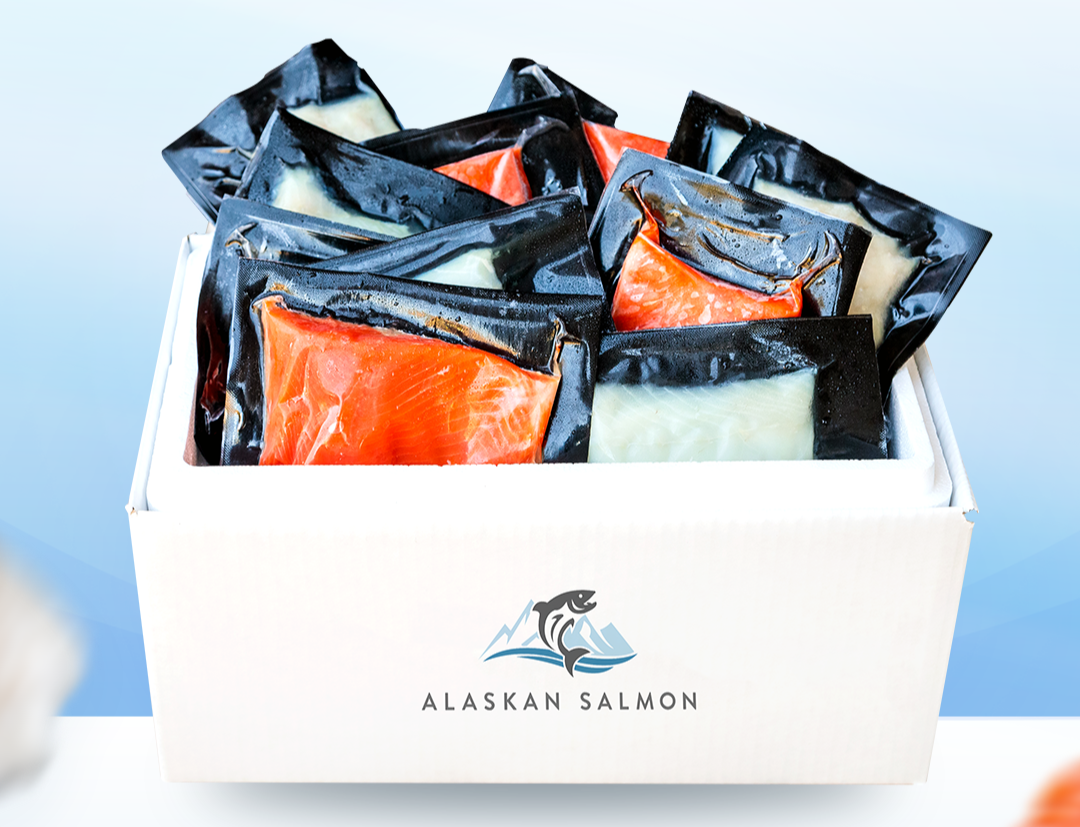How to Steam Salmon Perfectly Every Time
Updated on Jun 25, 2025
Steaming is one of the healthiest ways to cook salmon — and one of the easiest. With no added fat and a juicy, flaky texture every time, it’s a go-to method for anyone who wants great results fast. In this step-by-step guide, I’ll share my exact process, plus pro tips to make sure your salmon turns out perfect.
Why Steam Salmon? (And Why It’s Healthier)
I used to pan-fry or bake salmon all the time—until I gave steaming a shot. Honestly, I didn’t expect much at first, but I was blown away. Not only did the salmon come out juicier, but it also tasted cleaner, fresher, and somehow more “pure.” And the best part? I didn’t need to drown it in oil or butter to make it flavorful.
If you’re looking for a cooking method that’s both healthy and hassle-free, steaming salmon might be the game-changer you didn’t know you needed. Here’s why I swear by it now:
Retains nutrients and moisture
One of the best things about steaming salmon is how it preserves what matters most — the nutrients and the natural juiciness of the fish. Unlike other high-heat methods, steaming uses gentle heat, which helps lock in essential vitamins, minerals, and healthy fats. You’ll end up with salmon that’s not only delicious but also nourishing.
No need for oil and butter
Trying to cut back on added fats? Steaming is your best friend. There’s no need to drizzle oil or add butter to keep the salmon moist — the steam handles that for you. This makes it easier to enjoy rich flavor without extra calories or grease.
Great for heart-healthy meals
Salmon is already packed with omega-3s, which are great for your heart. Steaming helps you enjoy those benefits without adding anything unnecessary. It’s a clean, simple way to keep your meals aligned with your health goals, especially if you’re watching your fat or sodium intake.
Easy and quick
Steaming salmon at home is one of the fastest and healthiest ways to enjoy this nutrient-rich fish. Whether you're cooking wild-caught sockeye, king salmon, or any other variety, steaming locks in moisture and flavor without needing oils or complicated techniques. In less than 15 minutes, you can have perfectly cooked, flaky salmon on your dinner table with very little cleanup required.
What You’ll Need to Steam Salmon
Before we dive into the actual cooking, let’s make sure you’ve got everything ready. Don’t worry, you won’t need anything fancy. A few simple ingredients and basic kitchen tools are all it takes to steam salmon like a pro at home.
Ingredients:
- Salmon fillets (fresh or thawed)
- Salt
- Pepper
- Lemon slices (optional)
- Fresh herbs like dill or parsley (optional)
- Garlic or ginger slices (optional)
- Soy sauce or light marinade (optional)
Equipments:
- Steamer basket or steaming rack
- Large pot with lid (for stovetop steaming)
- Tongs or spatula (to safely handle the salmon)
- Foil or parchment paper (if doing foil packet steaming)
- Oven-safe dish (for oven steaming)
- Microwave-safe dish with cover (for microwave steaming)
- Instant-read thermometer (optional but helpful)
How to Prep Your Salmon Before Steaming
The first thing I always do is check for pin bones. I run my fingers gently along the surface of the fillet to feel for any tiny bones that might still be hiding. If I find any, I pull them out carefully using kitchen tweezers or small pliers.
Related: Removing Pin Bones from Salmon and Deboning Salmon
Once the fillet is bone-free, I pat it dry with paper towels. Removing excess moisture helps the seasonings stick better and prevents too much liquid from pooling during steaming.
Then it’s time to season. I usually go simple: a little salt and pepper is often enough. But sometimes I’ll add lemon slices, fresh herbs, or a bit of garlic or ginger to give the salmon extra flavor as it steams.
Related: Best Seasoning for Salmon
Finally, I let the seasoned salmon rest at room temperature for about 10–15 minutes. This helps it cook more evenly when it goes into the steamer.
Related: Cooking Salmon Temperature Guide
How to Steam Salmon Perfectly
Depending on what you have in your kitchen, there are a few easy ways to steam salmon to perfection.
Here are my go-to methods:
Stovetop steaming
When I want that fresh, delicate salmon flavor to really shine, stovetop steaming is one of my favorites. It’s quick, easy, and gives you perfect control over the cooking. Plus, watching that gentle steam rise always feels a bit like cooking magic.
- Fill a large pot with about 1 to 2 inches of water. Make sure the water level stays below the bottom of your steamer basket or rack.
- Place the steamer basket or rack into the pot.
- Bring the water to a gentle boil over medium heat.
- Once the water is steaming, carefully place the prepared salmon fillets into the steamer basket.
- Cover the pot with a tight-fitting lid to trap the steam.
- Steam the salmon for 5 to 10 minutes, depending on the thickness of the fillet. A 1-inch thick fillet usually takes about 8 minutes.
- Check for doneness: the salmon should flake easily with a fork, and the internal temperature should reach 145°F (63°C).
- Remove from the steamer carefully and serve immediately.
Oven steaming
Oven steaming is my go-to when I want tender, perfectly cooked salmon without much fuss. It’s great for busy nights because once it’s in the oven, the steam does all the work. The result? Juicy, flaky salmon that’s full of flavor.
- Preheat your oven to 375°F (190°C).
- Place the seasoned salmon fillets into an oven-safe baking dish.
- Add a few tablespoons of water, broth, or white wine to the dish to create steam as it bakes.
- Cover the dish tightly with aluminum foil to trap the steam inside.
- Place the covered dish in the preheated oven.
- Bake for 12 to 15 minutes, depending on the thickness of your fillets. Thicker fillets may take up to 18 minutes.
- Check for doneness: the salmon should flake easily with a fork and reach an internal temperature of 145°F (63°C).
- Remove from the oven, carefully uncover (watch out for steam), and serve.
Foil packet steaming
When I want a no-mess, flavor-packed way to cook salmon, foil packet steaming is my secret weapon. It locks in all the juices, lets you toss in extra flavors, and makes cleanup a breeze. Plus, it’s always fun to open up that little packet of perfectly cooked salmon.
- Preheat your oven to 375°F (190°C).
- Cut large pieces of aluminum foil (or parchment paper) — enough to fully wrap each salmon fillet.
- Place each seasoned salmon fillet in the center of the foil sheet.
- Add optional ingredients like lemon slices, herbs, or a splash of broth for extra moisture and flavor.
- Fold the foil over the salmon and crimp the edges tightly to seal and create a packet.
- Place the foil packets on a baking sheet.
- Bake for 12 to 15 minutes, depending on the thickness of the fillets.
- Carefully open one packet (watch for hot steam) to check for doneness: the salmon should flake easily and reach 145°F (63°C).
- Serve directly from the packet or plate as desired.
Microwave steaming
Microwave steaming is my quick fix when I need perfectly cooked salmon in just a few minutes. It’s fast, easy, and surprisingly reliable. With a little steam and careful timing, you still get tender, juicy salmon without turning on the stove or oven.
- Place the seasoned salmon fillet in a microwave-safe dish.
- Add a few tablespoons of water or broth to the dish to help create steam.
- Cover the dish with a microwave-safe lid or microwave-safe plastic wrap, leaving a small corner vented to allow some steam to escape.
- Microwave on medium power for 3 to 5 minutes, depending on the thickness of the fillet and your microwave’s wattage.
- Check for doneness after 3 minutes. If needed, continue cooking in 30-second increments until the salmon flakes easily and reaches 145°F (63°C).
- Let it sit covered for 1 minute after cooking to allow the steam to finish cooking the fish.
Common Mistakes to Avoid When Steaming Salmon
One of the biggest mistakes I see is overcooking or under-seasoning the salmon. Because steaming is such a gentle cooking method, it can be easy to let it go a minute or two too long. Overcooked salmon turns dry and loses its tender texture. On the other hand, don’t forget to season it well before cooking. Since there’s no browning or crisping in steaming, the seasoning you add before cooking is what carries the flavor.
Another issue is using too much water or lifting the lid too often while steaming. You only need a small amount of water to generate steam — just enough so it doesn't touch the fish. And every time you open the lid, you let precious steam escape, which can throw off cooking time and leave the salmon unevenly cooked.
Finally, not patting the salmon dry before seasoning is a simple step that’s easy to skip but makes a big difference. Excess moisture on the surface prevents seasonings from sticking properly and can lead to a slightly watery texture when steamed.
Summary
Steaming salmon is one of my go-to methods whenever I want something healthy, quick, and reliably delicious. With just a few simple tools and steps, you can get perfectly tender salmon every time — no oil, no fuss. As long as you prep it right, season it well, and keep an eye on the timing, steaming makes it easy to serve a heart-healthy meal that tastes great. Give it a try and see how simple perfect salmon can be.
Want to make it even better? Start with premium wild-caught sockeye salmon for unmatched flavor and nutrition. Shop our wild sockeye salmon now and taste the difference.
FAQs About Steaming Salmon
Is salmon good for steaming?
Yes, salmon is perfect for steaming. Its natural fats keep it moist and flavorful even with the gentle heat of steaming. Plus, steaming helps preserve the fish’s nutrients, giving you a healthy, tender, and delicious result.
Can you steam frozen salmon?
Technically, you can steam frozen salmon, but I don’t recommend it if you want the best texture. Steaming frozen fillets can lead to uneven cooking. It’s always better to thaw the salmon fully in the fridge before steaming for even, tender results.
Related: How to Thaw Salmon
Is steaming better than baking or grilling?
It depends on what you’re going for. Steaming is one of the healthiest methods because it doesn’t require any added fat and locks in moisture. Baking and grilling salmon can add extra flavor through browning and caramelization, but they also risk drying out the salmon if not done carefully. Steaming gives you a consistently moist, tender texture that’s hard to mess up.








